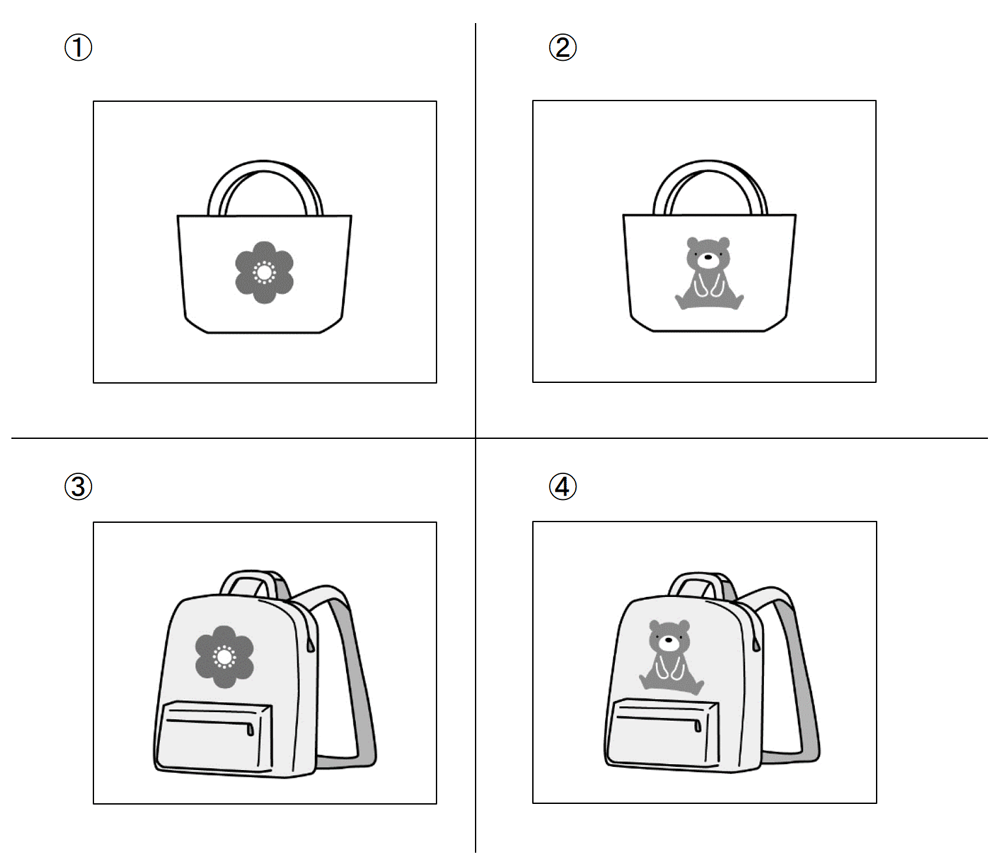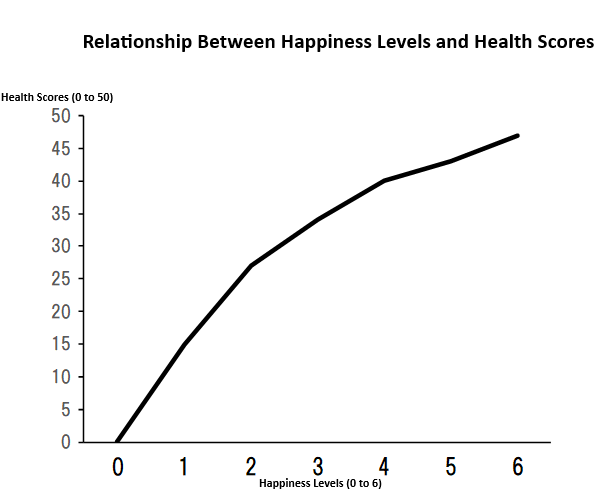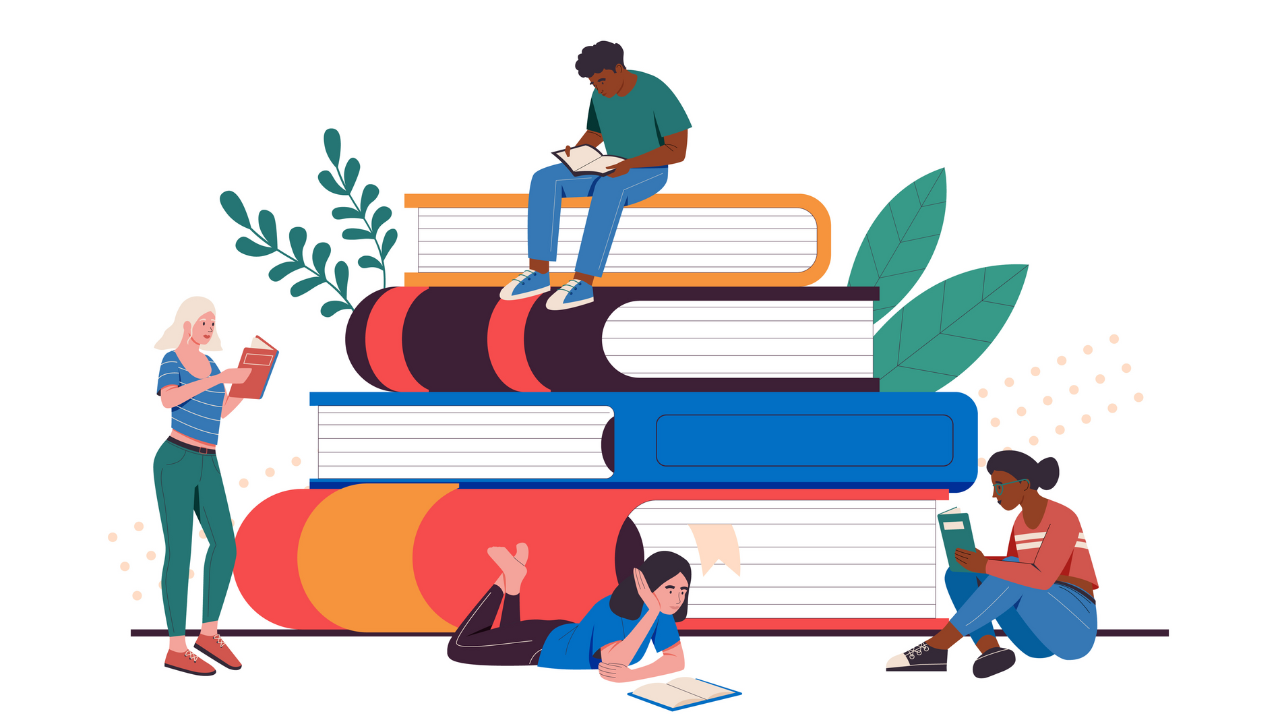

(Script)
One afternoon on the train, a young man sat near me, busy with his smartphone and not paying attention to others. When the train stopped at the next station, he suddenly stood up, took a bag from the rack, and got off. After the doors closed, I saw him through the window, giving the bag to an elderly woman who forgot it.
| (word1) | JP1 |
| (word2) | JP2 |
| (word3) | JP3 |
| (word4) | JP4 |
| (word5) | JP5 |
| a. | He gave the bag to an elderly woman. |
| b. | He left the bag on the train. |
| c. | He gave the bag to another passenger. |
| d. | He took the bag home with him. |
| Answer: |
(Compliment the customer)
The answer is “a. He gave the bag to an elderly woman. “
Please read aloud the answer sentence(s).
Good job! Let’s move on to the next.

| hint1 | JP1 | |
| hint2 | JP2 |

*difference 違い
| hint1 | JP1 | |
| hint2 | JP2 | |
| hint3 | JP3 |
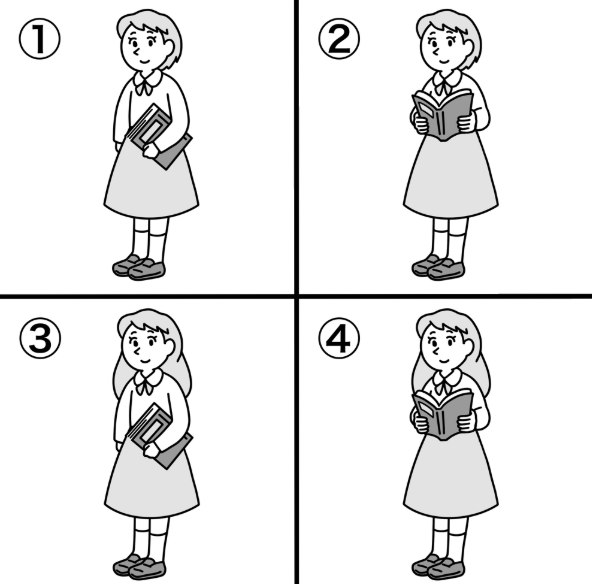
| 1. | Look at pictures 1 and 3. What is the difference between pictures 1 and 3? |
| Answer: |
The difference between pictures 1 and 3 is the _______. In picture 1, the girl has ______ hair. In picture 3, the girl has ______ hair. |
(Compliment the customer)
The answer is,
———
The difference between pictures 1 and 3 is the hair.
In picture 1, the girl has short hair.
In picture 3, the girl has long hair.
———
| 2. | Look at pictures 3 and 4. What is the difference between pictures 3 and 4? |
| Answer: |
The difference between pictures 3 and 4 is the ______. In picture 3, the girl is ______ a book. In picture 4, the girl is ______ a book. |
(Compliment the customer)
The answer is,
———
The difference between pictures 3 and 4 is the action.
In picture 3, the girl is holding a book in her arm.
In picture 4, the girl is reading a book.
———



| 3. | Which picture matches the script? |
| Answer: | I think picture ___ matches the script. |
(Compliment the customer)
The answer is,
———
I think picture 3 matches the script.
———
| 4. | Why did you choose that picture? Please tell me the reason and describe the picture you chose. |
| Answer: | I chose picture ___ for two reasons. First, the girl has ______ hair. Second, she is ______ a book in her arm. |
(Compliment the customer)
The answer is,
———
I chose picture 3 for two reasons.
First, the girl has long hair.
Second, she is holding a book in her arm.
———
Awesome! Let’s move on to the next.


The graph shows the number of internet users from 1990 to 2020. The X-axis shows the years. The Y-axis shows the number of internet users, starting from 100 million to 4 billion.
| hint1 | JP1 | |
| hint1 | JP1 | |
| hint2 | JP2 | |
| hint3 | JP3 |

hint2
hint3
hint4
hint5

| 1. | In which year did the number of internet users reach 2 billion? |
| Answer: | The number of internet users reached 2 billion in the year ____. |
(Compliment the customer)
The answer is,
———
The number of internet users reached 2 billion in the year 2010.
———
| 2. | How many internet users were there in 2015? |
| Answer: | In 2015, there were ____ internet users. |
(Compliment the customer)
The answer is,
———
In 2015, there were 3 billion internet users.
———
| 3. | Based on your answers to 1 and 2, explain what you can see in the graph. |
| Answer: | The graph shows that the number of internet users ______ a lot from 2010 to 2015. |
(Compliment the customer)
The answer is,
———
The graph shows that the number of internet users increased a lot from 2010 to 2015.
———
You did a great job reading and describing the graph!
Let’s move on to the next.

| hint1 | JP1 | |
| hint2 | JP2 |

| hint1 | JP1 | |
| hint2 | JP2 | |
| hint3 | JP3 | |
| hint4 | JP4 | |
| hint5 | JP5 | |
| hint6 | JP6 |

| hint1 | JP1 | |
| hint2 | JP2 | |
| hint3 | JP3 | |
| hint4 | JP4 | |
| hint5 | JP5 | |
| hint6 | JP6 | |
| hint7 | JP7 |

| 1. | Both the museum and the university … |
| a. | are free to visit and offer historical insights. |
| b. | have exhibits about Europe and are open until 9:00 pm. |
| c. | charge no admission and provide multilingual explanations. |
| d. | offer cultural performances and historical tours. |
| Answer: |
(Compliment the customer)
The answer is,
———
“a. Both the museum and the university are free to visit and offer historical insights”.
———
Wonderful! Let’s move on to the next.
| 2. | Which parts of the information make you think that? |
| Answer: | Looking at the hours and admission details, both the museum and the university are free to __________ and __________ historical insights. So, I think __________ is the correct answer. |
(Compliment the customer)
The answer is,
———
Looking at the hours and admission details, both the museum and the university are free to visit and offer historical insights. So, I think a is the correct answer.
———


*entire すべて

|
Katy
|
Gab, do you have any plans for the weekend? |
|
Gab
|
I’m going mountain climbing with some friends on Saturday. Do you want to come? |
|
Katy
|
Thank you, but I’m staying at home. I’m not an outdoorsy person. |
|
Gab
|
You could make an exception. Climbing mountains is an incredible experience. You’re out in the open, surrounded by nature. Also, it’s good exercise. |
|
Katy
|
I’d rather just go to the gym if I want to exercise. It only takes an hour, and I feel pleasant and refreshed afterward. |
|
Gab
|
Yes, but the gym isn’t a real challenge. Climbing mountains forces you to push yourself to your limits. |
|
Katy
|
Maybe, but to me, it seems too unsafe. |
|
Gab
|
Not at all. Cars or even stairs injure way more people than mountains. |
|
Katy
|
I guess we’re different, then. |
|
Gab
|
That’s true. Anyway, I have to get ready now. See you next time! |
hint1
hint2
hint3
hint4
hint5
hint6
hint7
hint8
hint9

| 1. | What are they talking about? |
| Answer: | They are talking about ___________. |
(Compliment the customer)
The answer is,
———
They are talking about mountain climbing.
———
| 2. | Between Katy and Gab, who agrees and who disagrees with the topic? |
| Agree: | _______ agrees with the topic. |
| Disagree: | _______ disagrees with the topic. |
(Compliment the customer)
The answer is,
———
Gab agrees with the topic.
Katy disagrees with the topic.
———
| 3. | What is one of the opinions in the conversation that agrees with the topic? |
| Answer: | It is an incredible experience to __________ because you’re out in the open, surrounded by nature. |
(Compliment the customer)
The answer is,
———
It is an incredible experience to climb mountains because you’re out in the open, surrounded by nature.
———
| 4. | What is one of the opinions in the conversation that disagrees with the topic? |
| Answer: | Mountain climbing seems too __________. |
(Compliment the customer)
The answer is,
———
Mountain climbing seems too unsafe.
———
| 5. | If you agree with the topic, what do you think is a good point? |
| Answer: | I think __________ a good point. |
insert hint if needed
insert hint if needed
(Compliment the customer)
The answer is,
(Any customer’s answer(s) is/are correct. Compliment the customer.)
| 6. | If you disagree with the topic, what do you think is a bad point? |
| Answer: | I think __________ is a bad point. |
insert hint if needed
insert hint if needed
(Any customer’s answer(s) is/are correct. Compliment the customer.)
| 7. | Finally, please tell me your own opinion. Do you agree or disagree that mountain climbing is an incredible experience? |
| Answer: |
I agree. / I disagree. Because ____________________________________. |
(Any customer’s answer(s) is/are correct. Compliment the customer.)




|
Do you enjoy outdoor activities like mountain climbing or hiking? Why or why not? What is a challenging activity you have done recently? How did you feel about it? Have you ever faced a situation where you had to push yourself to your limits? |
| Answer: |








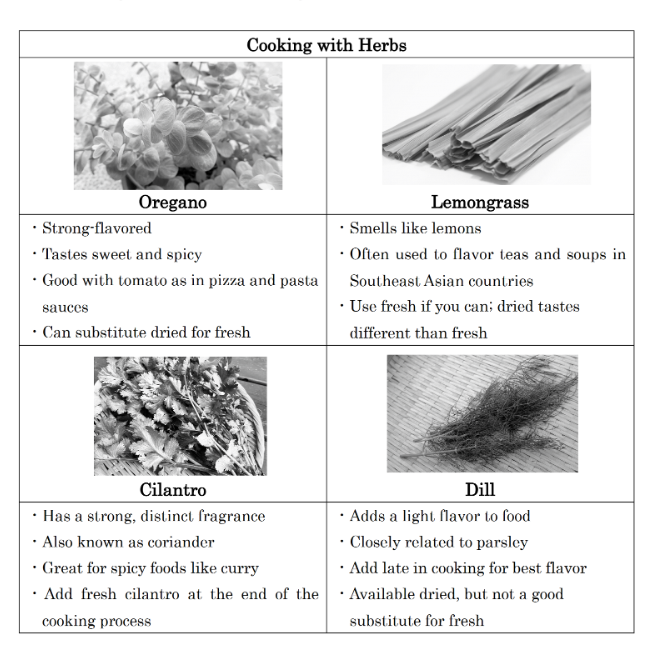










 GOOD
GOOD 

